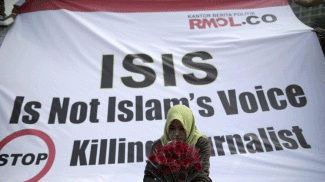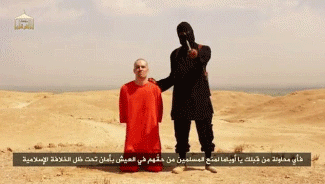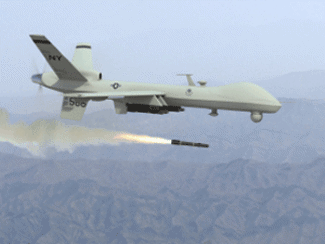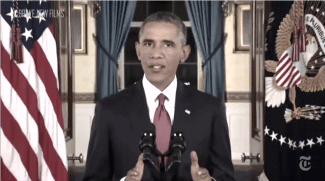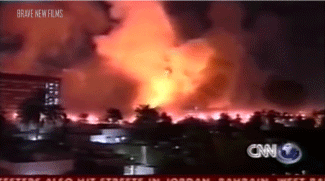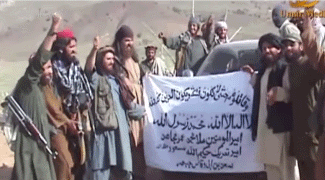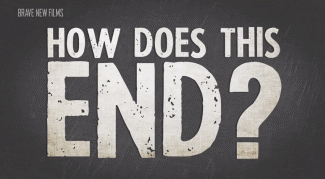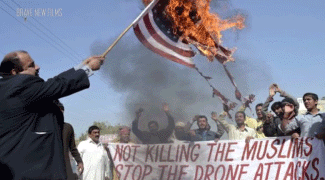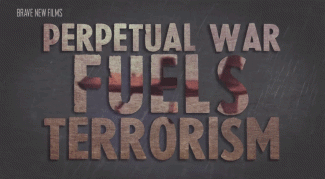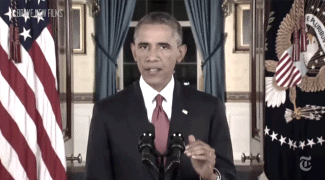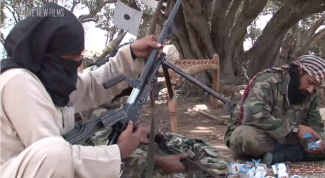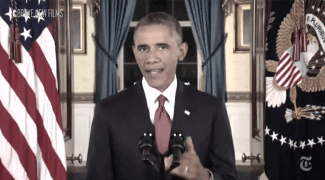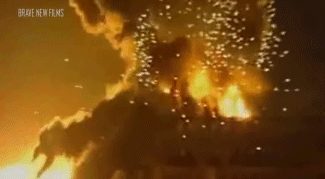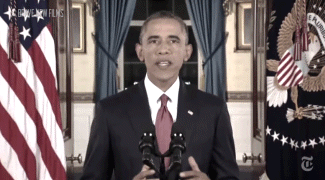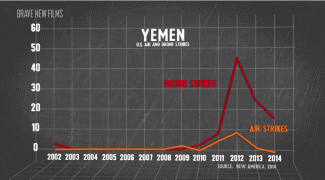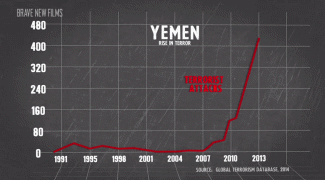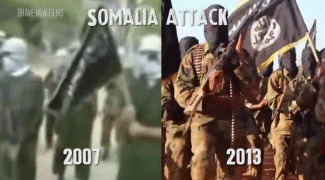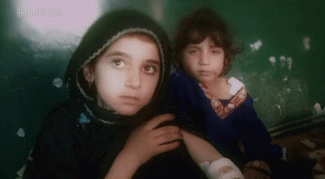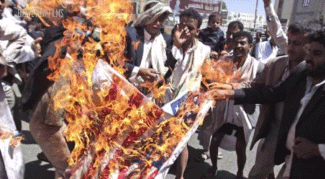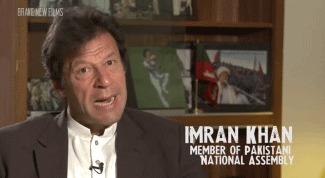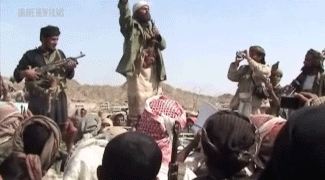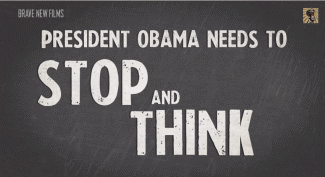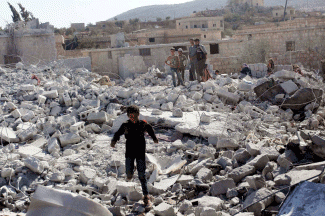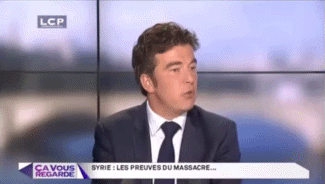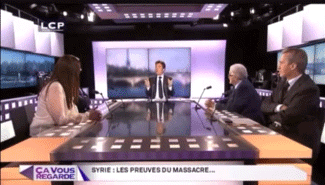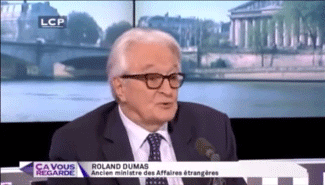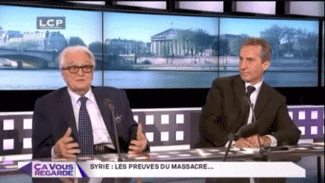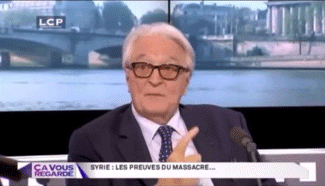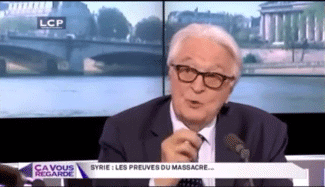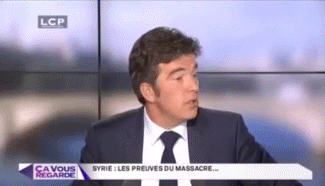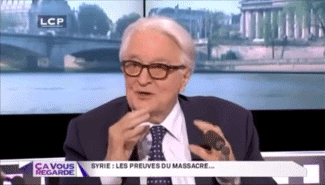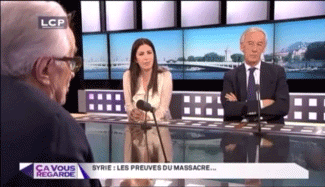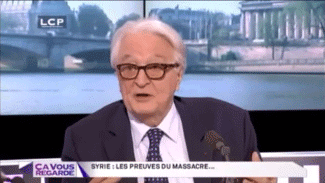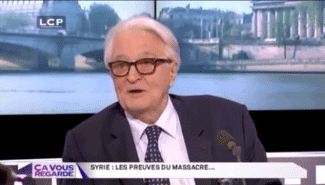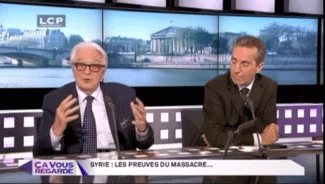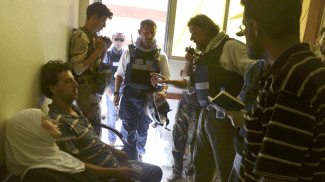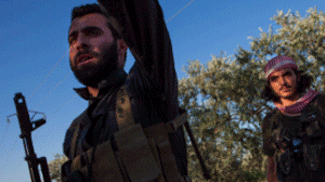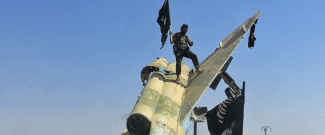Dividing Our Enemiesby Thomas H. Henriksen
NOTICE: THIS WORK MAY BE PROTECTED BY COPYRIGHTYOU ARE REQUIRED TO READ
THE COPYRIGHT NOTICE AT THIS LINK BEFORE YOU READ THE FOLLOWING WORK, THAT IS AVAILABLE SOLELY FOR PRIVATE STUDY, SCHOLARSHIP OR RESEARCH PURSUANT TO 17 U.S.C. SECTION 107 AND 108. IN THE EVENT THAT THE LIBRARY DETERMINES THAT UNLAWFUL COPYING OF THIS WORK HAS OCCURRED, THE LIBRARY HAS THE RIGHT TO BLOCK THE I.P. ADDRESS AT WHICH THE UNLAWFUL COPYING APPEARED TO HAVE OCCURRED. THANK YOU FOR RESPECTING THE RIGHTS OF COPYRIGHT OWNERS.
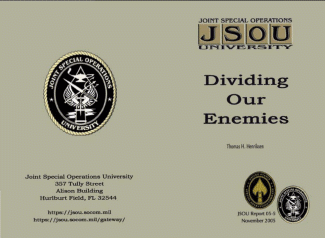
Joint Special Operations University
357 Tully Street
Alison Building
Hurlburt Field, FL 32544
https:/jsou.sopcom.mil
https://jsou.socom.mil/gateway/JOINT SPECIAL OPERATIONS UNIVERSITY
Dividing Our Enemiesby Thomas H. Henriksen
JSOU REPORT 05-5
November 2005
Joint Special Operations University and the Strategic Studies Department
The Joint Special Operations University (JSOU) provides its publications to contribute toward expanding the body of knowledge about Joint Special Operations. JSOU publications advance the insights and recommendations of national security professionals and Special Operations Forces’ students and leaders for consideration by the SOF community and defense leadership.
JSOU is a subordinate organization of the US Special Operations Command (USSOCOM), MacDill Air Force Base, Florida. The mission of the Joint Special Operations University is to educate SOF executive, senior and intermediate leaders and selected other national and international security decision makers, both military and civilian, through teaching, outreach, and research in the science and art of joint special operations. JSOU provides education to the men and women of Special Operations Forces and to those who enable the SOF mission in a joint environment.
JSOU conducts research through its Strategic Studies Department where effort centers upon the USSOCOM mission and these operational priorities:
• Preempting global terrorist and CBRNE threats
• Enhancing homeland security
• Performing unconventional warfare and serving as a conventional force multiplier in conflict against state adversaries
• Conducting proactive stability operations
• Executing small-scale contingencies
The Strategic Studies Department also provides teaching and curriculum support to Professional Military Education institutions—the staff colleges and war colleges. It advances SOF strategic influence by its interaction in academic, interagency and US military communities.
The JSOU portal is
https://jsou.socom.mil.
Joint Special Operations University
Brigadier General Steven J. Hashem
President
Dr. Brian A. Maher
Vice President
Strategic Studies Department
Lieutenant Colonel Michael C. McMahon
Director J
ames D. Anderson
Director of Research
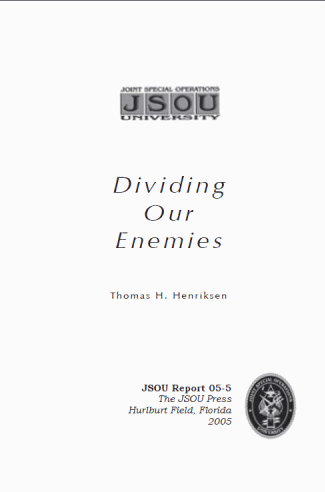
The views expressed in this publication are entirely those of the author and do not necessarily reflect the views, policy or position of the U.S. Government, Department of Defense, USSOCOM, or the Joint Special Operations University.
This work was cleared for public release; distribution is unlimited.
*******
Comments about this publication are invited and should be forwarded to Director, Strategic Studies Department, Joint Special Operations University, 357 Tully Street, Alison Building, Hurlburt Field, Florida 32544. Copies of this publication may be obtained by calling JSOU at 850-884- 2763; FAX 850-884-4732.
*******
This report and other JSOU publications can be found on the SOF Education Gateway at
https://jsou.socom.mil/gateway/. Click on “Highlighted Research” to view. The Strategic Studies Department, JSOU is currently accepting written works relevant to special operations for potential publication. For more information please contact Mr. Jim Anderson, JSOU Director of Research, at 850-884-1569, DSN 579-1569,
james.d.anderson@hurlburt.af.mil. Thank you for your interest in the JSOU Press.
ISBN 0-9767393-7-2
ForewordDr. Thomas H. Henriksen provides us with historical insights of the benefits and difficulties of implementing strategic concepts for Dividing Our Enemies. He suggests that understanding and leveraging the human fault lines to counter terrorism can sometimes be an important complement to, or even substitute for, Special Operations Forces’ direct action tactics and larger battles of annihilation. Overwhelming fire is likely to be much less effective by itself in today’s global fight against violent extremism than other approaches that can take advantage of the political divisions among insurgents and terrorists.
Henriksen’s review of some past and recent experiences in Afghanistan and Iraq suggests that Special Operations Forces are probably exploiting the right strategic vision for our Global War on Terrorism. The use of the Northern Alliance in Afghanistan to counter the Taliban forces was unique to that historical setting. Yet it is “certainly a historically viable stratagem,” Henriksen suggests, with likely application in places like the Philippines, Africa, and Central Asia. The vital role played by SOF in engaging the Kurdish opponents to Hussein’s government during the Persian Gulf War and the SOF actions during Operation Provide Comfort presaged the Kurdish revolt in the mid-1990s and Kurdish help again in 2003 during Operation Iraqi Freedom as US forces moved unopposed into Kirkuk.
The downside of attempting to use factions against one another is seen in our strategic blunder in Fallujah in the spring of 2004, when successfully advancing US Marines were ordered to withdraw from that city and the Baathist-run Fallujah Brigade was put in charge to police the town. This resulted in angered Kurdish and Shiite leaders, a sanctuary for terrorist extremist Abu Musab Zarqawi, and an operational and moral back-slide for US forces. Henriksen points out that exacerbating Sunni–Shia division would contravene our vision for a viable democratic government in Iraq, but that in line with our global campaign against terrorist extremists, exploiting the rivalries or animosities among the insurgent bands clearly meets our goals.
Henriksen’s paper invites the SOF reader to revisit established doctrine for Foreign Internal Defense and Internal Defense and Development along with the complex issues about how to divide and conquer. It is likely that the intelligence needed for exploiting the differences among our enemies will result from these on-the-ground operations. And while lacking the glamour of direct action missions, the effects of special operations teams on the ground conducting unconventional warfare, psychological operations, and civil military operations are absolutely central to achieving an end-state of realizing democratic and viable governments. These are the special operations ways and means that can lead to successfully “leveraging inherent human fault lines to counter terrorism … ,” as Henriksen writes. SOF warriors will agree that having our enemies eliminate each other offers advantages over slug-it-out methodologies.
Lt Col Michael C. McMahon, USAF
Director, Strategic Studies Department
October 2005
Henriksen: Dividing Our Enemies
Dividing Our EnemiesThomas H. Henriksen
Our priority will be first to disrupt and destroy terrorists organizations of global reach and attack their leadership; command, control, and communications; material support; and finances. This will have a disabling effect upon the terrorists’ ability to plan and operate. —National Security Strategy of the United States, September 2002 Politics and Counterinsurgency
If warfare is the continuation of politics by other means, as Clausewitz suggested, then counterinsurgency is the continuation of warfare by political means. The Prussian military philosopher understood that political objective dictates the type of war to be waged, its scope, and its intensity. The importance of the political considerations in counterinsurgency operations is nearly impossible to overstate. In the American way of waging counterguerrilla conflicts, politics has played—and continues to play—a central role in both Afghanistan and Iraq. The intrinsic properties of combating insurgents and terrorist networks demand keen attention to the political realm, not just martial capabilities.
The political dimension includes a range of civic action initiatives to win over the hearts and minds of the indigenous population to the U.S.-led regime changes that occurred in the initial phase of hostilities in Afghanistan and Iraq. They include refurbishing schools, building roads, digging wells, and treating the sick. These civic action programs alone are not unlike similar counterinsurgency initiatives by the British, French, Portuguese, or even the United States in years past.1
What is different today is the degree to which American power is being applied not just to the conventional hearts and minds campaigns but also what is termed nation building and democracy promotion. On this macro-level, the elements of democracy include free and fair elections, political parties and campaigns, independent media, and public discourse. In Afghanistan and Iraq, American power is being wielded for the revolutionary goal of transforming authoritarian societies along democratic lines. In both countries—but especially in fissiparous Iraq—the U.S.-led coalition worked, and is working, to preserve the territorial integrity of the battered lands. Iraq’s well-publicized ethno-religious divisions between the Sunni, Shiite, and Kurdish populations hardly need elaboration, except to emphasize the additional burdens placed on post-Saddam Hussein counterinsurgency forces to counter secessionist pulls.
These political endeavors transcend the traditional application of America power. As Russell F. Weigley wrote in his classic book “the strategy of annihilation became characteristic of the American way of war.” 2 In short, American power has been exerted to build and preserve, not just to annihilate. Future engagements promise similar political considerations.
On the micro-level, specific U.S. and coalition units within Iraq and Afghanistan have sought—and do seek—to ameliorate harsh or deprived living conditions of the indigenous populations. The efforts encompassed a series of health and welfare efforts to include medical treatment, potable water, job opportunities, and even electricity production to run air conditioners in the inferno summer months. These and similar civic action programs represent the obverse side of the counterinsurgency political coin. It is a crucial dimension in counterguerrilla campaigns. But the reverse side of this coin is one less discussed. It involves no effort to win over those caught in the crossfire of insurgent and counterinsurgent warfare, whether by bullet or broadcast.
On the contrary, this underside of the counterinsurgency coin is calculated to exploit or create divisions among adversaries for the purpose of fomenting enemy-on-enemy deadly encounters. It is an unconventional yet necessary component of this shadowy form of battle against an elusive adversary that does not stand and fight. Rather, in the insurgency dimension of the current anti-terrorist campaign, small groups of Special Operations Forces will continue to find themselves up against bands of insurgents in societies marked by tribal and sectional differences that could be turned to the advantage of special operators. Africa, Central Asia, the Philippines and elsewhere have witnessed the deployment of SOF to counter Islamic extremists. As such, understanding and leveraging inherent human fault lines to counter terrorism is like the joker in card games; it can substitute for the “card” of greater numbers and greater firepower. It is ideally suited to the world of stealth and countersubversion.
Dividing and DefeatingSowing divisions among enemies is as old as warfare. By the time Niccolò Machiavelli cited the ancient political maxim divide et impera, the strategy of dividing to conquer had long become accepted practice in statecraft and warfare. The tactics associated with pitting one enemy against another have not been ignored by U.S. military forces. But they have often been subordinated to the American way of war that relied on massive firepower, as characterized in both World Wars, the Korean War, first and second Persian Gulf Wars, and much of the Vietnam War. The global struggle against violent extremism presents a highly political conflict where overwhelming supporting fire is less applicable. By the same token, the extreme ideological and political divisions among the terrorists and insurgents open chinks to clever and adaptable forces. Terrorists and their intellectual backers, whether they be commentators, columnists, or clerics, have profound doctrinal and agenda differences.3
From the founding of the United States, Washington governments, in fact, have relied on subterfuge, skullduggery, and secret operations to advance American interests. Even in the midst of America’s greatest conventional war of the twentieth century, the United States resorted to covert operations under the Office of Strategic Services. The OSS along with British intelligence services, for instance, aided the French resistance to disrupt the German occupation and to prepare for Europe’s liberation. The Cold War also witnessed clandestine missions. United States and its allies mount diversionary efforts to confound and divide their enemies. And American adversaries likewise staged secret missions against the United States, its allies and interests.4 Having the nation’s enemies eliminate each other has obvious advantages. When divisions were absent, American operators instigated them.
Among this generation’s incarnations of this divisive strategy, which took place during the Vietnam War, was the fabrication of a fictitious resistance movement entitled the Sacred Sword of the Patriots League (SSPL). While stood up by the Central Intelligence Agency in 1962, the SSPL was handed off to the Military Assistance Command Vietnam’s Studies and Observation Group (MACVSOG or SOG). Special Forces officers assumed oversight of SSPL and other covert operations aimed at North Vietnam. As noted by Richard H. Shultz, Jr. in his masterful book, the purpose of the SSPL “was to foster the impression that a well-organized resistance was active in North Vietnam.” 5 SOG conducted a spate of covert operations, psychological operations, and deceptions to throw North Vietnam off balance. SOG operators sought through their Diversionary Program, code-named Forae, to convince Hanoi that teams of enemy agents had penetrated deep into its territory. The deception sought to disrupt the North Vietnamese rear, by taking advantage of the communist’s regime’s well-known paranoia about spies and saboteurs.
While SOG had unheralded successes as well as serious setbacks during its operations spanning from 1964 to 1972, it constantly ran against impediments from senior military officers, State Department, and the Lyndon Johnson White House. The timidity and bureaucratic obstacles hampered operations and constrained missions to narrow agendas. With the SSPL venture, SOG took pains to raise a bogus “fifth column” within totalitarian North Vietnam in order to spark a witch-hunt amongst the communist party and the military command that would impair Hanoi’s support of the Viet Cong insurgency in South Vietnam. Given the commanding attention devoted to internal security—with overlapping police apparatuses, informants, and population control measures—communist societies were generally labeled as denied areas for covert paramilitary operations because of their impenetrable nature. SOG’s phantom league offered a means to circumvent Hanoi’s home-front safeguards.
Divisions in Afghanistan and IraqThe Soviet era’s virtually inaccessible societies are a universe apart from present-day Afghanistan and Iraq, where tribal loyalties, local attachments, shifting alliances, ethnic antagonism, and religious hatreds abound. During the Soviet era, Marxist-Leninist regimes touted the classless society by which only the working class and their vanguard (the communist party) were said to exist. The aristocracy, bourgeoisie, and the capitalists were liquidated. This imposed uniformity furthered totalitarian control of vast populations, although all communist societies were marked by hierarchies and privileges, especially for party members. Other despotic dispensations resort to different means to maintain power, however.
Afghanistan. In Afghanistan, Iraq, and many of countries in the region and beyond, the regimes play on ethnic and religious differences to maintain power. In their own version of dividing-to-rule, pre-U.S. invasion governments in Afghanistan and Iraq indeed deepened factional divides, which left them vulnerable to foreign manipulation that facilitated regime change.
The deep divisions within prewar Afghanistan worked to the U.S.- coalition’s military advantage. The mountainous country’s steep valleys and high peaks contributed to the isolation that produced factionalism and warlordism throughout its history. The 1979 Soviet invasion acted to coalesce Afghan tribesmen, urban dwellers, and religious clerics against the Red Army and their local allies. Aided by Pakistan, Saudi Arabia, and China, as well as the United States, the Afghan resistance wore down the invading Soviet military and compelled Moscow to pull out of the inhospitable country in 1989. The Kremlin left behind a Soviet puppet, Mohammed Najibullah, a sadistic intelligence chief, who held out until April 1992, when his regime crumbled. Without an external threat to unify the onetime Afghan resistance, the insurgent bands fell to fighting among themselves, and Afghanistan plunged into anarchy.
Demobilized fighters banded together under warlords to battle other local armies. In the ensuing chaotic fighting, Kabul fell to an alliance of Tajiks, Uzbeks, and other non-Pashtun groups representing the first time in three hundred years that the dominant Pashtuns lost control of the capital. Burhanuddin Rabbani, a Tajik, emerged from a power struggle to head an uneasy alliance of northern warlords and presided from Kabul over an unruly country beset with brigands and cutthroats.6
The Taliban (“the students”) movement took up arms to end the internecine conflict and lawlessness. Led by Mullah Mohammed Omar, a veteran of the Soviet war, the Taliban adhered to an extremely conservative interpretation of Islam, which they strictly enforced on themselves and others. Based mainly among the Pashtuns and nurtured by Pakistan, which wanted to influence events in Afghanistan, the Taliban accrued arms and martial skills from Pakistani benefactors.7 Sympathetic elements within the Inter-Services Intelligence (ISI) directorate, Pakistan’s military intelligence agency, provided assistance to the poorly trained and armed ragtag Taliban militias.
By the end of 1996, the Taliban prevailed over the northern warlords and seized the main cities including the sprawling, mountain-ringed capital where the ousted Rabbani government had ruled. By force of arms, the Taliban fighters imposed a semblance of order, if not enlightened progress, in most of the country. Fed up with years of lawlessness, many Afghans acquiesced toward or embraced the Taliban as a necessary evil to restore civil stability.
The Taliban’s military success and their religiosity attracted sympathizers and financial supporters from the Arabian Peninsula and elsewhere. Estranged from his base in Sudan, Osama bin Laden and some 150 henchmen, moved to Afghanistan in the months preceding the Taliban capture of Kabul. In Afghanistan, bin Laden morphed from terrorist financier to terrorist mastermind. The Saudi-exile set up terrorist training camps, instigated the bombings of the two U.S. embassies in East Africa along with the USS Cole, and launched the “planes operation” against the United States.
For this part, Rabbani and his cohorts escaped to a tiny wedge of territory northeast of the capital in the Panjshir Valley to carry on their anti-Pashtun struggle as the Northern Alliance. This loose network of Taliban opponents afforded the United States a ready-made ally to attack the theocratic government in Kabul, which played host to al Qaeda. Unlike SOG’s subversive operations against North Vietnam, the United States did not have to fabricate an opposition front. What’s more the Central Intelligence Agency still had liaisons with Soviet-era resistance fighters in Afghanistan, which afforded CIA and Special Forces operators invaluable contacts within the mountainous society.8 They bribed, armed, and somewhat organized the fiercely nationalistic Northern Alliance into a tactical ally and proxy force. In times past, they would have opposed a U.S. invasion but now America was the enemy of their enemy, and thus a friend.
After the September 11, 2001 terrorist attacks on the World Trade Center and the Pentagon, the United States launched a counter attack on Osama bin Laden’s al Qaeda headquarters in Afghanistan. A month after the air bombardment began on October 7th, senior U.S. military officers briefly floated the idea for the Americanization of the proposed ground war with scenarios for deploying some 55,000 troops. That huge number and the logistical nightmare of resupplying them led to the reliance on airpower, Special Forces, and the Northern Alliance to bring down the Taliban regime. Along with directing precision-guided munitions on Taliban and al Qaeda targets, SOF units undertook a variety of missions—to secure airports, cut roads, and attack fleeing militiamen—that preceded deployment of troops from the U.S. Marine Corps and U.S. Army units. This strategy spared the United States from fielding a huge ground force.9 Additionally, SOF and CIA worked among warlords in the north and the Pashtuns, the southeastern Afghan community, to split them from Taliban rulers.10 By convincing and bribing disgruntled northern chieftains and Pashtun leaders, whose communities formed the Mullah Omar’s backbone, either to switch sides or withhold support from the Kabul regime, operators and agents splintered the Taliban allies.
That the “Afghan Model” can be exactly replicated to other settings is open to doubt because Taliban-ruled Afghanistan constituted a unique set of historical and political circumstances.11 But the model of dividing disaffected elements from a regime is certainly a historically viable stratagem. Many states in Africa, Central Asia or even the Philippines where SOF are deployed in counterterrorism operations possess ethnic, religious, or sectional division.
Iraq. Iraq presented another stark illustration of ethnic and religious cleavages put to the use of a ruling party. The Baathist Party, a secular and state socialist movement, ruled Iraq as a police state for decades by relying on the Sunni population, which made up about 20 percent of the country’s population, to suppress the Shiite majority (some 60 percent of Iraq), the Kurds (less than 20 percent), and many other smaller segments of the populace. President Saddam Hussein wielded the purse and the dagger like a Mafia don to buy patronage or to eliminate opposition. His power plays left him vulnerable among excluded communities when the U.S.-led multinational coalition invaded. In addition to their commando-style missions of securing oil wells and neutralizing missile batteries in western Iraq, SOF played a vital role converting Hussein’s Kurdish opponents to an American asset during the invasion phase of Operation Iraqi Freedom.
Henriksen points out that exacerbating Sunni–Shia division would contravene our vision for a viable democratic government in Iraq, but that in line with our global campaign against terrorist extremists, exploiting the rivalries or animosities among the insurgent bands clearly meets our goals.
The story of Special Operations Forces in capitalizing on and widening divisions within our enemy’s ranks is better known in Afghanistan than during Operation Iraqi Freedom and in post-invasion Iraq. The Taliban-Northern Alliance conflict was well known to outsiders. Washington’s massive support to the anti-Taliban alliance also received saturation news coverage. Yet, the effort of dividing our enemies in Iraq affords worthy case studies in divisive tactics. During Operation Iraqi Freedom, the U.S.-led invasion benefited from the prewar contacts with the Kurds in northern Iraq. After the Persian Gulf War, the United States went to the aid of the Kurdish population in Operation Provide Comfort. Later, the CIA instigated a Kurdish revolt in the mid-1990s.12
When Turkish government blocked the transit of the 4th Infantry Division across its territory into Iraq in early 2003, the decision hampered the execution of Operation Iraqi Freedom. Working with Kurdish political leadership, the United States instead landed light forces in northern Iraq. Two battalions from the 173rd Airborne Brigade rolled into Kirkuk on the heels of Kurdish uprisings that ousted Iraqi army units from the major regional city and nearby oil fields. The paratroopers met no opposition because the Kurdish peshmerga militias cleared the area of the retreating Iraqis. The airborne soldiers and the 26th Marine Expeditionary Unit reinforced the SOF units operating in northern Iraq and pressured Saddam Hussein’s forces to the south in another example of turning to internal divisions to bring down adversarial regime. As in Afghanistan, the historical splits within Iraq aided SOF and regular coalition forces. Both U.S. interventions seized upon existing geopolitical opportunities. As such, they may not be readily repeatable. But they provide insight into smaller-scale instances of generating red-on-red conflicts. It is these type of forays that can be executed at the operational and tactical level that demanded greater attention and afford lessons for future use to field operatives.
Red-on-Red ConflictsThe post-invasion phase in Iraq provides an interesting case study of fanning internecine discontent among enemies, leading to red-against-red firefights. Events during fall 2004 within the central Iraqi city of Fallujah showcased the clever machinations required to set insurgents battling insurgents. Ensconced within the Sunni Triangle, which early on had developed into anti-coalition stronghold, Fallujah played a prominent part in the rising chain of bombings, beheadings, and shootings of Iraqi, U.S. civilian and military personnel, and other non-Iraqi residents. A brief background is required prior to describing the events within Fallujah in late 2004.
Following the murder and dismemberment of four private contractors by a mob in Fallujah on March 31, 2004, U.S. Marines laid siege to the city that had become a hotbed of anti-American resistance. After three days fighting, the Marines penetrated deeply into the city with only six dead. Yet the attack became controversial owing to noncombatant casualties, destruction of buildings, and the local sentiment that it had been motivated by revenge for the grisly deaths of the four security personnel. Lakhdar Brahimi, the U.N.’s recently named envoy to Iraq, accused U.S. military commanders of meting out collective punishment. Ordered to halt the offensive, the Marines broke off their attack. A three-week stalemate ensued. As a gesture toward Iraqification, the local U.S. commanders pulled back and handed over security responsibilities to the city’s residents.13
Authority was vested in a Baathist-run Fallujah Brigade to police the town and restore order. This high-risk gamble of cooptation instead of confrontation proved in the longer run to be a mistake and a failure. It also supplies a cautionary footnote for those trying to convert rabid enemies to brothers in arms. The attempt angered Kurdish and Shiite leaders. More gravely, it checked the use of American power on the verge of annihilating the coalition’s foe. Officered by former Republican Guard generals, the Fallujah Brigade proclaimed victory over the Marines, collaborated with the insurgents, surrendered the Marine-supplied weapons and trucks to the insurgents, and turned a hotspot into the epicenter of the insurgency.14 Fallujah became a “no-go” zone for U.S. forces, a terrorist safe haven, and the headquarters of the notorious Jordanian-born Palestinian terrorist Abu Musab Zarqawi, who orchestrated multiple car bombings, kidnappings, and beheadings of American, Iraqis, and foreigners. In sum the city of 250,000 inhabitants descended to a Taliban-like polity of Islamic extremism. As a consequence, Fallujah represented the greatest single military setback to the counterinsurgency campaign to date.
A remarkable proportion of the violence taking place in Iraq is regularly credited to the Jordanian Ahmad al-Khalayleh, better known as Abu Musab al-Zarqawi, and his organization Al Qaeda in Iraq. Sometimes it seems no car bomb goes off, no ambush occurs that isn't claimed in his name or attributed to him by the Bush administration. Bush and his top officials have, in fact, made good use of him, lifting his reputed feats of terrorism to epic, even mythic, proportions (much aided by various mainstream media outlets). Given that the invasion and occupation of Iraq has now been proven beyond a shadow of a doubt to be based upon administration lies and manipulations, I had begun to wonder if the vaunted Zarqawi even existed.
In Amman, where I was recently based, random interviews with Jordanians only generated more questions and no answers about Zarqawi. As it happens, though, the Jordanian capital is just a short cab ride from Zarqa, the city Zarqawi is said to be from. So I decided to slake my curiosity about him by traveling there and nosing around his old neighborhood.
"Zarqawi, I don't even know if he exists," said a scruffy taxi driver in Amman and his was a typical comment. "He's like Bin Laden, we don't even know if he exists; but if he does, I support that he fights the U.S. occupation of Iraq."
Chatting with a man sipping tea in a small tea stall in downtown Amman, I asked what he thought of Zarqawi. He was convinced that Zarqawi was perfectly real, but the idea that he was responsible for such a wide range of attacks in Iraq had to be "nonsense."
"The Americans are using him for their propaganda," he insisted. "Think about it -- with all of their power and intelligence capabilities -- they cannot find one man?"
Like so many others in neighboring Jordan, he, too, offered verbal support for the armed resistance in Iraq, adding, "Besides, it is any person's right to defend himself if his country is invaded. The American occupation of Iraq has destabilized the entire region."
The Bush administration has regularly claimed that Zarqawi was in -- and then had just barely escaped from -- whatever city or area they were next intent on attacking or cordoning off or launching a campaign against. Last year, he and his organization were reputed to be headquartered in Fallujah, prior to the American assault that flattened the city. At one point, American officials even alleged that he was commanding the defense of Fallujah from elsewhere by telephone. Yet he also allegedly slipped out of Fallujah either just before or just after the beginning of the assault, depending on which media outlet or military press release you read.
He has since turned up, according to American intelligence reports and the U.S. press, in Ramadi, Baghdad, Samarra, and Mosul among other places, along with side trips to Jordan, Iran, Pakistan and/or Syria. His closest "lieutenants" have been captured by the busload, according to American military reports, and yet he always seems to have a bottomless supply of them. In May, a news report on the BBC even called Zarqawi "the leader of the insurgency in Iraq," though more sober analysts of the chaotic Iraqi situation say his group, Jama'at al-Tawhid wal Jihad, while probably modest in size and reach is linked to a global network of jihadists. However, finding any figures as to the exact size of the group remains an elusive task.
Former US Secretary of State Colin Powell offered photos before the U.N. in February, 2003 of Zarqawi's "headquarters" in Kurdish-controlled northern Iraq, also claiming that Zarqawi had links to Al-Qaeda. The collection of small huts was bombed to the ground by U.S. forces in March of that year, prompting one news source to claim that Zarqawi had been killed. Yet seemingly contradicting Powell's claims for Zarqawi's importance was a statement made in October, 2004 by Secretary of Defense Donald Rumsfeld, who conceded that Zarqawi's ties to Al Qaeda may have been far more ambiguous, that he may have been more of a rival than a lieutenant to Osama bin Laden. "Someone could legitimately say he's not Al Qaeda," added Rumsfeld.
-- The Zarqawi Phenomenon, by Dahr Jamail
The Fullujah episode highlights one of the paradoxes in the application of raw military might. Custom and international law sanctions the wielding of military force against enemy combatants. Thus, the “shock and awe” operations conformed to accepted practices, particularly since the U.S. attackers minimized “collateral damage,” i.e. harm to innocent civilians. But the United States was unable to use its full strength to achieve security in the occupation phase without inflicting many casualties among the noncombatant population. Counterinsurgency campaigns demand the use of discriminating firepower to hit insurgents without undue civilian deaths. Otherwise, the general population sides with the underground fighters and against the occupiers. Calibrating proportionate counterattacks to guerrilla provocations of hit-and-run attacks, suicide bombings, and other nonconventional tactics is a tricky business. Too little force allows the insurgent to survive and too much can generate fresh recruits to the insurgent cause. The dilemma lies at the heart of waging counterinsurgency campaigns. In addition, it points again to the overwhelming political aspect of counterinsurgent warfare.
After the return of local sovereignty to Fullujah residents, the central Iraqi city seethed with intramural tensions among the anticoalition inhabitants. Lying at the heart of Sunni resistance to the American-led coalition, Fullujah brimmed with anti-Americanism. Entering the city became hazardous for U.S. troops, which lacked allied Iraqi police or military forces in the city that months earlier had passed under thrall of anti-U.S. forces.
Zarqawi used Fallujah as center for his countrywide insurgency. It was the hub to his spokes, so to speak. Not all Fallujah residents were enamored with Iraq’s chief terrorist’s operations. Zarqawi’s Salafi beliefs grated on men who did not want to grow beards or women to cover their hair. The strict Salafi outlook clashed with the more moderate and different Sufi views of the residents, such as praying at the graves of relatives, which the Salafis regard as blasphemous. This division occurred between Sunni peoples.
Among this generation’s incarnations of this divisive strategy, which took place during the Vietnam War, was the fabrication of a fictitious resistance movement entitled the Sacred Sword of the Patriots League (SSPL). While stood up by the Central Intelligence Agency in 1962, the SSPL was handed off to the Military Assistance Command Vietnam’s Studies and Observation Group (MACVSOG or SOG). Special Forces officers assumed oversight of SSPL and other covert operations aimed at North Vietnam. As noted by Richard H. Shultz, Jr. in his masterful book, the purpose of the SSPL “was to foster the impression that a well-organized resistance was active in North Vietnam.” 5 SOG conducted a spate of covert operations, psychological operations, and deceptions to throw North Vietnam off balance. SOG operators sought through their Diversionary Program, code-named Forae, to convince Hanoi that teams of enemy agents had penetrated deep into its territory. The deception sought to disrupt the North Vietnamese rear, by taking advantage of the communist’s regime’s well-known paranoia about spies and saboteurs.
Additionally, the Zarqawi jihidis and the nationalistic Fallujahans disagreed over the use of terror tactics. Both wanted the Americans out of the Fallujah and out of Iraq; but they disagreed on the tactics. Many of the city’s inhabitants opposed kidnappings of foreign journalists, indiscriminate bombings that killed Iraqis, and sabotage that blew up infrastructure benefiting fellow citizens. They believed that the jihadi tactics incurred undo coalition attention toward Fullujah to preempt the attacks. The nationalistic Iraqis as embodied in the Mujaheddin Shura Council, made up of 18 clerics, tribal chiefs, and former Baathist Party members, opposed Zarqawi for his tactics. The council’s head Abdulaziz al-Janabi even called Zarqawi a “criminal.”
Evidence of factional fighting between the residents came to light with nightly gun battles not involving coalition forces.15 These firefights between insurgent factions represented the impact of U.S. psychological operations (PSYOP), which took advantage of and deepened the intra-insurgent forces. The PSYOP contingent cleverly crafted programs to exploit Zarqawi’s murderous activities and to broadcast them countrywide, thereby diminishing his folk-hero image among Iraqis.
Although the jihadis and Baathists shared hostility to the U.S. military forces surrounding Fallujah, their mutual antipathy to each other presented an opportunity [to] turn them against each other. Gun fights among enemy combatants worked to the obvious advantage of friendly forces, American and Iraqi. Battles among anti-coalition forces caused casualties, killed enemy combatants, and heightened factionalism thereby weakening the insurgents. In short, red-on-red battles can enhance the conventional blue-on-red engagements, which characterized much of the insurgency action in post-Hussein Iraq.
Other urban centers also witnessed hostility between secular insurgents and Muslim extremists—some of them within Al Qaeda affiliates. The divisions occurred over the practice of killing and maiming innocent Iraqis by bombings. In Ramadi, the capital of Anbar province, anti-extremists hung posters on walls and handed out flyers in mosques denouncing the jihadi tactics. In Baghdad, in the mainly Sunni section of Azamiyah, anti-coalition insurgents pulled down Al Qaeda banners from walls and streetlights.16 Within at least Fallujah, U.S. psychological warfare warriors took advantage of the insurgent infighting.
Information from the Joint PSYOP Task Force, 8th PSYOP Battalion of the 4th PSYOP Group out of Fort Bragg provided a case study in seizing on the splits between anti-coalition elements and turning them to good account. By tapping into the Fallujans’ revulsion and antagonism to the Zarqawi jihidis the Joint PSYOP Task Force did its “best to foster a rift between Sunni groups.” 17 The Joint PSYOP Task Force promoted the split by appeals to the Fallujans through meetings, radio and televisions broadcasts, and posters. It also distributed political cartoons depicting Zarqawi as a murderer of Muslim. One cartoon unflatteringly caricatured Zarqawi with a bandolier over his shoulder and standing amid piles of skulls. The caption read: “I will kill, slaughter and kidnap more and more humans to satisfy my desires and be worthy to receive the title of murderer.” 18 SOF units also disseminated handbills showing Zarqawi surrounded by rats. Obviously, for these and other psychological methods to resonate with the Iraqi population, there had to budding divisions between nationalistic type insurgents and jihadi elements within Sunni-dominated Fullujah. This campaign did not endanger the larger U.S. mission of trying to dampen down conflicts between the Sunni and Shiite branches of Islam to preserve Iraq’s territorial unity.
The psychological warfare experts also undertook a spectrum of activities to develop and strengthen trust between Iraqis and coalition forces and intensify local opposition to Al Qaeda and its Iraqi subsidiaries. They employed radio and television spots, conducted interviews with newspaper reporters, distributed handouts, utilized loudspeakers, posted Internet messages and held face-to-face briefings with tribal, political and religious leaders. After U.S. and Iraqi forces retook Fallujah, the Joint PSYOP Task Force played up the fact that Zarqawi fled before the fighting, leaving his fellow jihadis and many more Baathist insurgents to face the coalition’s fury.
Conclusions and RecommendationsLike the warning in the physicians’ Hippocratic oath, SOF and PSYOP troops must beware of doing more harm than good when planning to foment or benefit from infighting within enemy ranks. Exacerbating the Sunni-Shia divisions, for instance, would contravene strategic aims in Iraq and stated policy of Iraqi political leaders. But exploiting the rivalries or animosities among insurgent bands as the case in Fullujah or other anti-coalition havens is well within coalition goals and the rules of warfare. Devising techniques to instigate red-on-red conflicts is worthy of study, codification, and analysis. A deep understanding of the political landscape that derives from intelligence, experience, and study is, first and foremost, a requirement for this type of operation. In applying this complex tactic, SOF should not just be consumers of data but also first-hand providers of intelligence on potential divisions among red forces. In addition, they should take the lead in encouraging and assisting line units to gather and disseminate political information as well as the regular military intelligence.
As with other weapons, orchestrating red-on-red clashes has an apt time and place for employment. All hostile environments will not accommodate its application. But as another arrow in counterterror quiver, it can, when launched deftly, be discriminating and lethal.
_______________
Notes:1. Thomas H. Henriksen, Revolution and Counterrevolution: Mozambique’s War of Independence 1964-74. Westport, Connecticut: Greenwood Press, 1983; Alistair Horne, A Savage War of Peace: Algeria 1954-62. New York: Penguin Books, 1977; and J. Paul de B. Taillon, The Evolution of Special Forces in Counter-Terrorism: The British and American Experience. Westport, Connecticut: Praeger, 2001.
2. Russell F. Weigly, The American Way of War: A History of United States Military Strategy and Policy (1973; reprint Bloomington: Indiana University Press, 1977), page xxii.
3. The literature on this topic is vast. Two summaries can be found in Marc Segeman, Understanding Terrorist Networks (Philadelphia: University of Pennsylvania, 2004), especially chapters One and Two and Trevor Stanley, “Understanding the Origins of Wahhabism and Salafism,” TerrorismMonitor (the Jamestown Foundation), Volume III, Issue 14 (July 15, 2005), pages 8-10.
4. Thomas H. Henriksen, “Covert Operations, Now More Than Ever,” Orbis: A Journal of World Affairs, Volume 44, Number 1 (Winter, 2000), pages 145-56; John Prados, Presidents’ Secret Wars: CIA and Pentagon Covert Operations From World War II Through The Persian Gulf War. Chicago: Ivan R. Dee, 1996; and Christopher Andrew, For the President’s Eyes Only: Secret Intelligence and the American Presidency from Washington to Bush. New York: HarperCollins, 1995.
5. Richard H. Shultz, Jr., The Secret War Against Hanoi: Kennedy’s and Johnson’s Use of Spies, Saboteurs, Covert Warriors in North Vietnam (New York: HarperCollins, 1999), page 64.
6. Olivier Roy, Afghanistan: From Holy War to Civil War (Princeton: New Jersey: Darwin Press, Inc., 1995), pages 103-09.
7. Larry P. Goodson, Afghanistan’s Endless War: State Failure, Regional Politics, and the Rise of the Taliban (Seattle, Washington: University of Washington Press, 2001) pages 76, 106, 111.
8. Steve Coll, Ghost Wars: The Secret History of the CIA, Afghanistan, and Bin Laden, From the Soviet Invasion to September 10, 2001 (New York: Penguin Press, 2004), pages 458-59.
9. Eric Micheletti, Special Forces: War on Terrorism in Afghanistan, 2001- 2003 (Paris: Histoire & Collections, 2004), pages 6-12.
10. David Pugliese, Shadow Wars: Special Forces in the New Battle Against Terrorism (Ottawa, Ontario: Esprit de Corps Books, 2003), page 22.
11. For a sober analysis see, Stephen Biddle, Afghanistan and the Future of Warfare: Implication for Army and Defense Policy (Carlisle Barracks, Pennsylvania, 2002.
12. Robert Baer, See No Evil: The True Story of a Ground Soldier in the CIA’s War on Terrorism (New York: Three Rivers Press, 2002), pages 171-237.
13. Patrick J. McDonnell, “Outgoing Marine General Faults Fallouja Strategy,” Los Angeles Times, September 13, 2004, page A1.
14. Rajiv Chandrasekaran, “Key General Criticizes April Attack In Fallujah,” Washington Post, September 13, 2004, page A 17.
15. Patrick J. McDonnell.
16. Hamza Hendawi, “Insurgents Show Hostility To Extremists,” San Diego Union-Tribune, April 10, 2005, page 1.
17. Telephone interview with LTC Michael Ceroli, former commander Joint PSYOP Task Force, 8th PSYOP Battalion of the 4th PSYOP Group, June 1, 2005.
18. Materials provided from Joint PSYOP Task Force, 8th PSYOP Battalion of the 4th PSYOP Group.
